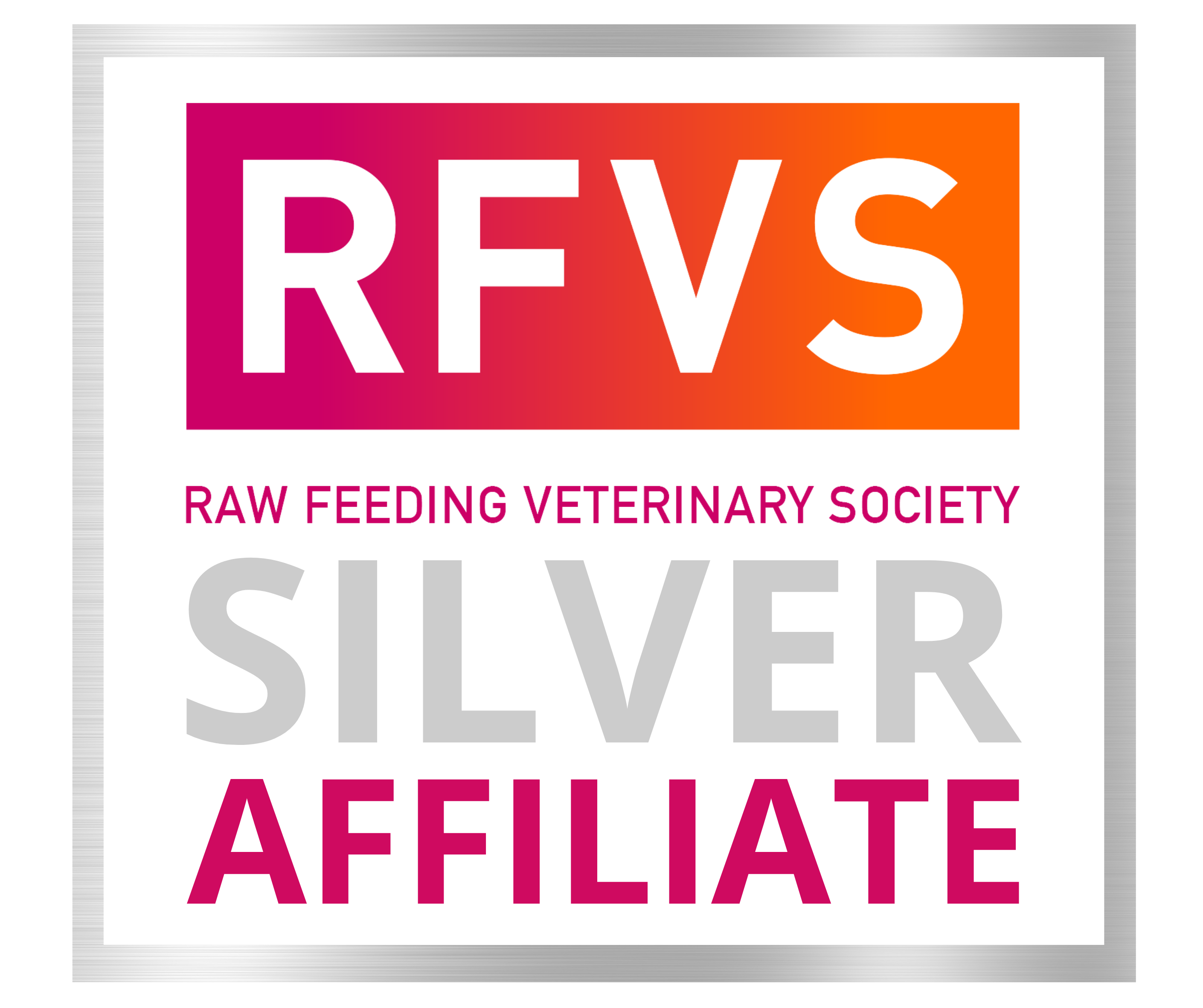Healthy Weight for Pets
TOO HEAVY?
Obesity is a huge and rapidly growing problem in cats, dogs and people. Increased adiposity (fatness) leads to an increased risk of ill health.
Fat cells promote inflammation (via the production of adipokines), which in turn is associated with a plethora of disease states (including heart disease and cancer). Lower adiposity (less fat) decreases the production of adipokines.
Lean animals produce fewer inflammatory adipokines, thus conferring upon them a level of protection from many chronic diseases.
You can use Body Condition Score (BCS) charts (cats, dogs) to assess whether your pet is carrying too much weight.
Over the last few decades, the prevailing view has been that of 'calories in versus calories out':If more calories are eaten relative to the calories that are expended through exercise, then weight gain will result. There is an implication that being overweight is to do with greed and laziness.
More recently the view has changed. It is now known that weight management is much more complex. The following factors warrant consideration:
1) CALORIE INTAKE - THIS IS COMPLEX FOR SEVERAL REASONS:
- Don't rely on the label: It is well established that the calorie counts on the nutrition labels on food products often vary (sometimes quite significantly) from the real number of calories in the food.
- Individual variation: Individuals animals will process calories quite differently due to genetic, microbial, and environmental differences. This means that if you have two same-sized dogs it is possible for one to lose weight and one to gain weight on calorie-equivalent diets.
- A calorie is NOT a calorie: Many studies (in dogs, cats, people) have taken two groups of study participants and put them on two different diets, but both with the same number of calories. The study groups on the carbohydrate-restricted diets lose more body fat, and retain more lean muscle mass than the groups on higher carbohydrate diets. The TYPE of calories consumed is key.
2) HORMONES & FOOD
Whether a fat cell chooses to release its contents for energy use, or store them as fat (promoting weight gain) is largely determined by hormones - such as insulin, estrogen and testosterone.
Insulin has been identified as the most influential in stimulating fat storage. Food intake largely determines insulin response. Insulin is produced mostly in response to carbohydrate intake (and a lesser amount for protein intake). Cereal grains in particular cause large insulin spikes.
3) INDIVIDUAL VARIATION
Genes:
- Certain genes within the DNA of mammals (including dogs) have been shown to predispose individuals to weight gain.
- Genes within the trillions of microbes living within mammals (predominantly in the large bowel) help determine how efficient an animal is at extracting energy from their food. More efficiency means potentially more weight gain. Many things can alter the microbiome - antibiotics may contribute to the obesity epidemics via their effects on microbes.
Exercise:
- The contribution of exercise to weight control is much smaller than previously thought. There is a lot of science that shows the benefits of exercise for overall health, but scant evidence to show that exercise is effective for long-term weight control.
SO WHAT DOES THIS MEAN FOR YOUR PET?
Of all the factors mentioned above - the only one that you can't change is the genes within the DNA (although the expression of these genes can be influenced by external factors).
According to Gary Taubes, calorie restriction drives hunger - so an easier approach to weight loss is to focus on the type of calories (bearing in mind that even 'good' calories can promote weight gain if they are eaten to excess). The best calories for weight control come from high quality, species-appropriate proteins and fats. A healthy diet will also support good microbiome health, which in turn will support the immune system, thus reducing the likelihood of needing antibiotics.
Most people find that raw-fed pets easily maintain an ideal BCS. The normal level of protein in this diet (compared to the low protein in processed and grain-free diets) helps them to regulate and satisfy their appetite. Some of you may need to increase or decrease food intake a small amount to help your pet achieve an optimal size. Let us know if you need help with this.
You can read more about food, hormones and dog obesity in this book. You can read more about obesity in cats here.
TOO LEAN?
Body Condition Score charts (cats, dogs) imply that thin pets are less healthy. The human version of a Body Condition Score chart - BMI - also suggests that thin people are unhealthy (a BMI under 18.5 is considered underweight). That thinness means ill health will certainly be true in some, but not all cases.
Two body condition factors are associated with longevity: adiposity, and lean muscle mass. There is evidence that low adiposity (leanness) combined with higher lean muscle mass leads to longer life spans. In other words - it is ok for your dog or cat to be on the lean side, as long as they have good musculature.
WHEN SHOULD YOU BE CONCERNED THAT YOUR PET IS TOO LEAN?
- If your pet has experienced un-explained weight change (in either direction) you need to find out why, as the change may be indicative of an underlying disease process.
- If your pet is very lean, and not well muscled.
- If your pet lacks energy for normal activities.
- If your pet is often unwell.
- If you have noticed anything unusual about your pet's appetite (a lean, but ravenous cat may have thyroid issues), or their thirst/drinking habits.
If any of the above occur (or you are worried for any other reason), you need to check in with your vet.

